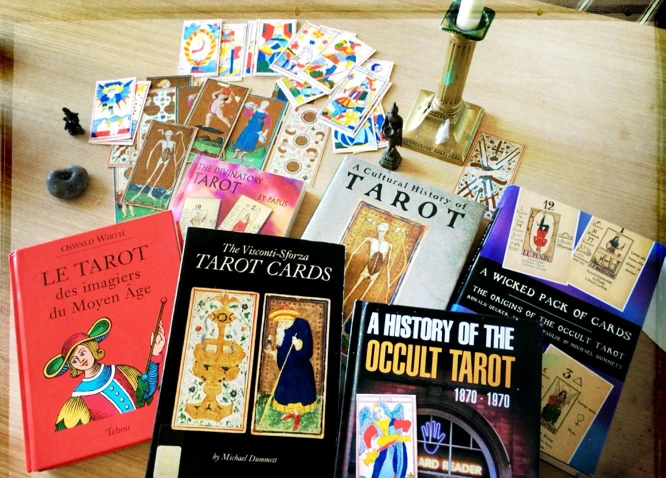Tarot, a centuries-old tool of divination, has had a profound impact on modern divination practices. With its origins rooted in ancient civilizations, the practice of using tarot cards for guidance and insight has evolved and spread throughout the world. Today, tarot readings are not only popular, but they also play a significant role in personal growth and self-discovery. This article will explore the historical significance of tarot, the science behind tarot, the various methods of interpreting tarot cards, common misconceptions, and the influence of tarot in popular culture. Whether you are a skeptic or a believer, understanding the impact and significance of tarot is essential in appreciating its role in modern divination practices.
Contents
- The Origins of Tarot
- Tarot as a Tool for Divination
- Historical Significance of Tarot Readings
- The Popularity of Tarot Readings Today
- Tarot Apps and Online Readings
- The Science behind Tarot
- Interpreting Tarot Cards
- Ethics and Responsibility in Tarot Readings
- Types of Tarot Spreads
- Common Misconceptions and Skepticism
- The Influence of Tarot in Popular Culture
- Integrating Tarot with Other Divination Practices
- The Future of Tarot
- Conclusion
-
Frequently Asked Questions
- What is the significance of tarot in divination practices?
- How do tarot cards work?
- Are tarot card readings accurate?
- Can anyone learn to read tarot cards?
- What is the difference between the major arcana and the minor arcana?
- What does it mean when a tarot card is reversed?
- Are there specific spreads for different types of questions?
- Are online tarot readings as effective as in-person readings?
- How can tarot be integrated with other divination practices?
- What is the future of tarot?
- References
The Origins of Tarot
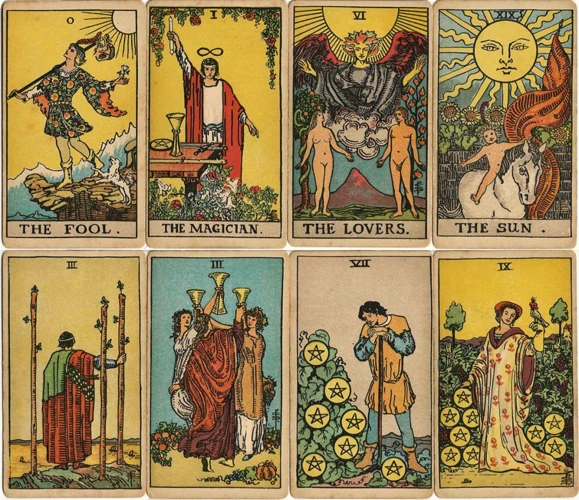
Ancient Origins
The ancient origins of tarot remain shrouded in mystery and speculation. While there is no definitive historical evidence pinpointing its exact origin, there are several theories regarding its ancient origins.
Egyptian Origins: Some believe that tarot cards trace their roots back to ancient Egypt. It is suggested that the imagery and symbolism found in the tarot decks may have been influenced by the Egyptian Book of Thoth, an ancient text associated with magic and divination.
Chinese Origins: Another theory proposes that tarot cards originated in ancient China. In Chinese culture, there is a tradition of using divination cards for spiritual guidance and fortune telling. It is speculated that these early Chinese divination cards may have influenced the development of tarot.
Hebrew and Jewish Mysticism: Some scholars suggest that tarot cards have connections to Jewish mysticism, particularly in the Kabbalistic tradition. The Kabbalah is a mystical system that delves into the interpretation of esoteric symbols and teachings. Tarot cards are believed to contain symbolism related to the Kabbalistic Tree of Life.
While these theories provide intriguing possibilities, the exact origins of tarot remain elusive. It is important to note that tarot, as we know it today, likely emerged through a combination of various cultural influences and practices over time.
Evolution and Spread
Tarot as a Tool for Divination
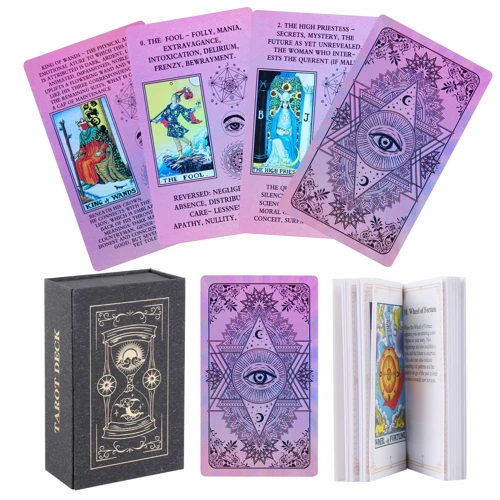
Understanding Tarot Cards
Tarot cards are a fundamental component of tarot readings and understanding their significance is crucial for effective divination. A standard tarot deck consists of 78 cards divided into two main sections: the Major Arcana and the Minor Arcana. The Major Arcana consists of 22 cards, each representing a significant life lesson or archetype. These cards, such as The Fool, The Magician, and The High Priestess, hold deep symbolism and offer profound insights into the spiritual journey. The Minor Arcana comprises 56 cards divided into four suits: Wands, Cups, Swords, and Pentacles. Each suit represents a different aspect of human experience, such as passion, emotions, intellect, and material possessions, respectively. Just like playing cards, the Minor Arcana also includes numbered cards (Ace to Ten) and four court cards (Page, Knight, Queen, and King) for each suit. Understanding the meanings and interpretations of each card in the tarot deck allows the reader to provide accurate insights and guidance during a reading. Additionally, the intricate artwork and symbolism depicted on the tarot cards, often influenced by Renaissance art, add another layer of depth to the readings, helping to tap into the subconscious mind and connect with higher spiritual energies.
Methods of Tarot Readings
- Single-Card Reading: In this method, a single card is drawn and interpreted to provide guidance on a specific question or situation. It provides a focused and concise answer.
- Three-Card Spread: This method involves drawing three cards, each representing the past, present, and future. It offers insights into the different aspects of a situation or question.
- Celtic Cross Spread: The Celtic Cross spread is one of the most commonly used tarot spreads. It involves laying out ten cards in a cross formation to gain in-depth insight into a situation, including the influences and outcomes.
- Relationship Spreads: These spreads specifically focus on relationships, whether romantic, familial, or friendships. They provide insights into the dynamics, challenges, and potential outcomes of the relationship.
- Open Reading: An open reading allows the reader to draw cards without a specific question in mind. This method provides a more general overview and allows for broader interpretations and insights.
- Combination of Methods: Many tarot readers employ a combination of different methods depending on the situation or individual preferences. This allows for a more personalized and tailored reading experience.
Historical Significance of Tarot Readings
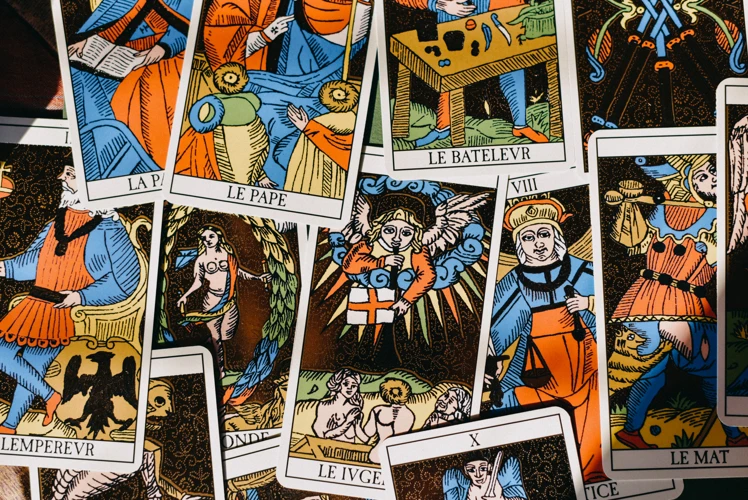
Medieval and Renaissance Period
During the medieval and Renaissance Period, tarot readings gained significant popularity and were widely embraced as a means of divination. Tarot decks became more accessible, and various regions in Europe developed their own unique styles. In the 14th and 15th centuries, tarot decks were primarily used by the nobility and the upper classes. It was during this time that the tarot began to be associated with esoteric wisdom and spiritual insight. The Visconti-Sforza deck, created in the 15th century, is one of the earliest surviving tarot decks from this era and is considered a masterpiece of Renaissance art. The tarot was also influenced by Christian symbolism during this period, with cards such as The Pope and The Lovers representing spiritual and moral values. Tarot decks from the Renaissance period featured intricate artwork, often depicting allegorical scenes and symbols associated with various virtues and vices. These decks were highly sought after and were often commissioned by wealthy patrons. The popularity of tarot readings during the medieval and Renaissance period set the stage for its continued significance and influence in the world of divination.
The Enlightenment Movement
The Enlightenment Movement, also known as the Age of Reason, had a significant impact on the interpretation and perception of tarot. During this period in the 18th century, there was a shift towards rationality, scientific inquiry, and skepticism towards superstition and the supernatural. As a result, tarot and other forms of divination faced criticism and scrutiny.
Enlightenment thinkers sought to explain the world through reason and logic, dismissing the mystical and esoteric aspects of tarot as mere superstition. Rationality and empirical evidence were prioritized over intuitive and spiritual practices.
However, not all Enlightenment figures rejected tarot outright. Some saw value in the symbolism and psychological insights that could be derived from tarot cards. Philosopher and mathematician Antoine Court de Gébelin believed that tarot had ancient Egyptian origins and contained hidden wisdom.
Although the Enlightenment Movement was characterized by skepticism and a focus on reason, it also contributed to the development of occult and esoteric movements. Tarot cards became associated with secret societies and the search for hidden knowledge.
The Enlightenment Movement had a complex relationship with tarot. While it emphasized reason and skepticism, it also sparked an interest in the esoteric and occult, paving the way for tarot’s continued relevance and popularity in modern divination practices.
The Popularity of Tarot Readings Today
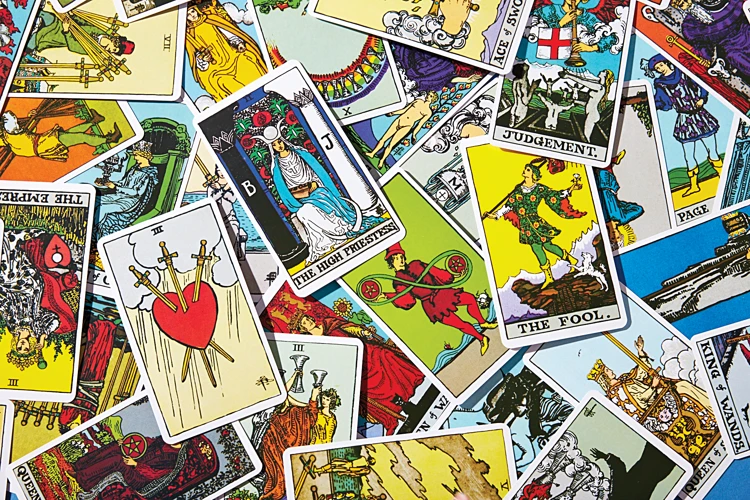
Modern Tarot Decks
Purpose and Personal Growth
Tarot Apps and Online Readings
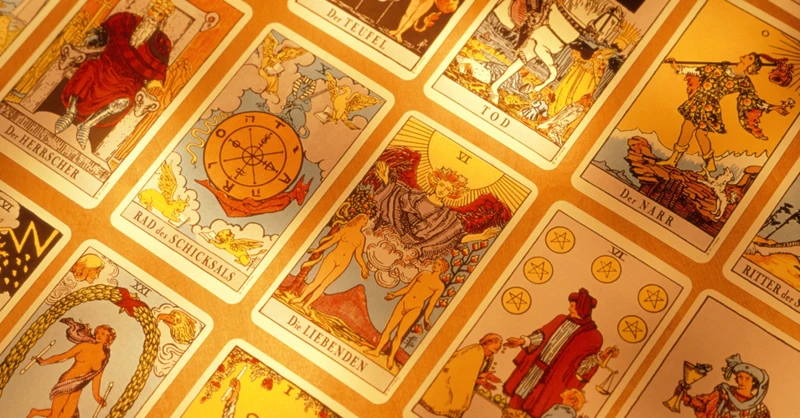
In today’s digital age, tarot has embraced technology, making it more accessible than ever through tarot apps and online readings. Tarot apps have gained popularity due to their convenience and ease of use. These apps typically offer a variety of tarot spreads and interpretations, allowing users to receive instant guidance and insight at their fingertips. Additionally, online tarot readings have become increasingly popular, with individuals seeking virtual readings from professional tarot readers. These online platforms provide a convenient way to connect with experienced readers from the comfort of one’s own home. While some critics argue that the authenticity and personal connection may be lost in digital readings, many people appreciate the privacy and anonymity that online tarot readings offer. It’s important to note, however, that when utilizing tarot apps or seeking online readings, it is crucial to choose reputable sources and ensure the privacy and security of personal information. As technology continues to advance, tarot apps and online readings will likely become even more prevalent, providing individuals with convenient and accessible ways to explore the realm of tarot divination.
The Science behind Tarot

The Psychology of Tarot
Tarot cards have a psychological component that goes beyond mere fortune-telling. The interpretation of tarot cards can tap into the subconscious mind, revealing hidden desires, fears, and beliefs. The images and symbols on the cards act as archetypes that resonate with universal human experiences. When individuals engage with tarot readings, they are invited to reflect on their own thoughts and emotions, allowing for self-reflection and introspection. The process of selecting cards and interpreting their meanings activates the participant’s imagination and intuition, stimulating their psychological faculties. This can lead to a greater understanding of oneself and one’s current life circumstances. The psychology of tarot also involves the concept of synchronicity, coined by Carl Jung. Jung believed that tarot cards can act as tools for synchronistic events, where meaningful coincidences occur, reflecting the deeper patterns at play in an individual’s life. The psychology of tarot recognizes that tarot readings can provide valuable insights into the human psyche, allowing individuals to gain clarity, make decisions, and navigate their life journeys with greater self-awareness.
Quantum Mechanics and Tarot
The connection between quantum mechanics and tarot may seem unexpected at first, but some theorists and practitioners have drawn parallels between the two. Quantum mechanics is a branch of physics that deals with the behavior of matter and energy at subatomic levels. It explores the principles of uncertainty, interconnectedness, and the influence of observation on reality. Similarly, tarot readings involve tapping into the hidden realms of consciousness, exploring possibilities and potential outcomes. Some proponents argue that the symbolism and archetypes found in tarot cards align with the concepts of superposition and entanglement in quantum mechanics. They view tarot as a means of accessing the collective unconscious and gaining insight into the interconnectedness of all things. While the connection between quantum mechanics and tarot is not grounded in scientific evidence, it offers a thought-provoking perspective on the mystical and spiritual aspects of tarot readings. It highlights the idea that there may be more to our reality than meets the eye, and tarot can be a tool for exploring these deeper dimensions of existence.
Interpreting Tarot Cards
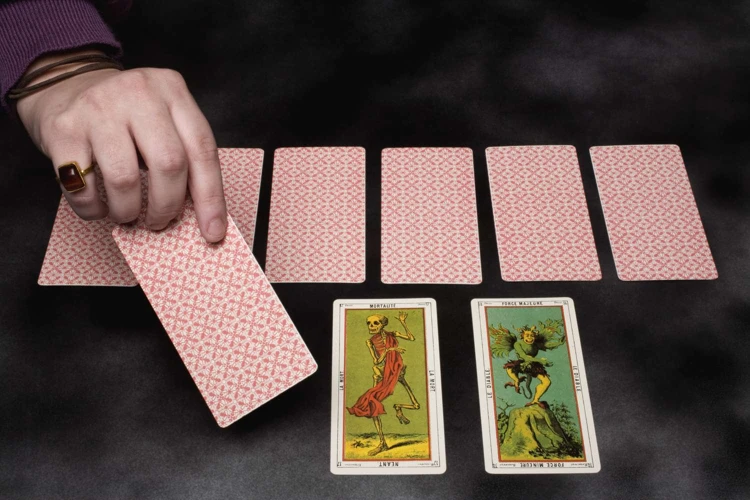
Major Arcana
The Major Arcana is one of the two main categories of cards in a tarot deck, consisting of 22 cards that hold significant spiritual and symbolic meanings. Each card in the Major Arcana represents a different stage or archetypal energy in a person’s journey through life. These cards are often seen as the core cards that provide profound insights and guidance in a tarot reading. Let’s take a closer look at some of the key cards in the Major Arcana:
1. The Fool: Representing new beginnings and taking risks, the Fool is an emblem of innocence and spontaneity. It invites individuals to embrace the unknown and trust in the process of life.
2. The Magician: Symbolizing the power of manifestation and harnessing one’s abilities, the Magician signifies individual talents and the ability to shape one’s reality through focused intention and willpower.
3. The High Priestess: Standing for intuition, wisdom, and inner knowledge, the High Priestess invites individuals to tap into their subconscious mind and explore their deep spiritual connections.
4. The Empress: Representing creativity, nurturing, and abundance, the Empress signifies the nurturing motherly energy and the importance of embracing one’s passions and creative expression.
5. The Emperor: Portraying authority, structure, and leadership, the Emperor signifies the need for organization and taking control of one’s life to achieve stability and success.
6. The Lovers: Symbolizing love, partnerships, and choices, the Lovers card represents the union of two souls and the importance of making thoughtful decisions that align with one’s values and desires.
7. The Wheel of Fortune: Signifying fate, destiny, and life cycles, the Wheel of Fortune reminds individuals that life is ever-changing and that they have the power to adapt and seize opportunities as they arise.
8. The Sun: Radiating joy, positivity, and vitality, the Sun card represents happiness and fulfillment, shining light on the path ahead and encouraging individuals to embrace their true selves.
Each card in the Major Arcana carries its own unique energy and message, providing deep insights into different aspects of life’s journey. During a tarot reading, these cards can reveal profound truths and ignite self-reflection, helping individuals gain clarity, guidance, and a deeper understanding of themselves and their life path.
Minor Arcana
The Minor Arcana is one of the two main divisions of a traditional tarot deck, along with the Major Arcana. Consisting of 56 cards, the Minor Arcana represents the everyday aspects of life and provides detailed insights into specific situations and events. It is further divided into four suits – Cups, Pentacles, Swords, and Wands – each capturing different areas of human experience. The suit of Cups symbolizes emotions, relationships, and intuition, offering guidance on matters of the heart and emotional well-being. Pentacles represent the material world, including finances, work, and physical aspects of life. Swords signify thoughts, conflicts, and communication, reflecting the mental challenges and decision-making processes we encounter. Wands embody creativity, ambition, and spiritual growth, encouraging us to tap into our inner passions and pursue our goals. Each suit contains ten numbered cards representing various stages or aspects of the suit’s theme, as well as four Court cards – Page, Knight, Queen, and King – symbolizing different personality traits and roles. The Minor Arcana, with its rich symbolism and intricate meanings, offers a deeper understanding of the specific areas of life that shape our experiences and choices.
Reversed Cards
Ethics and Responsibility in Tarot Readings
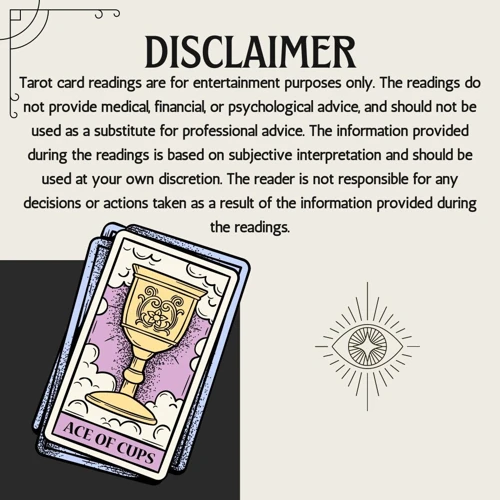
When it comes to tarot readings, ethics and responsibility play a crucial role in ensuring a positive and ethical experience for both the reader and the querent. Here are some key considerations:
1. Confidentiality: Respecting the privacy and anonymity of the querent is of utmost importance. Tarot readers should maintain client confidentiality and refrain from sharing personal details or outcomes of the reading without explicit permission.
2. Objectivity: Tarot readers should strive to maintain objectivity and avoid imposing their personal biases or beliefs onto the reading. It is essential to provide an unbiased interpretation of the cards and to remember that the reading is about the querent’s journey and not the reader’s own agenda.
3. Informed Consent: Prior to a tarot reading, the reader should ensure that the querent understands the process, limitations, and potential outcomes of the reading. This includes explaining that tarot readings are not fortune-telling and that the interpretation of the cards is subjective.
4. Empowerment: Tarot readings should aim to empower the querent and provide guidance rather than dictating specific actions or decisions. It is crucial for the reader to foster a sense of personal responsibility in the querent and encourage them to make choices that align with their own values and intuition.
5. Professionalism: Tarot readers should adhere to professional standards and conduct themselves in a respectful and ethical manner. This involves being punctual, maintaining appropriate boundaries, and charging fair and transparent fees for their services.
By upholding these ethical guidelines, tarot readers can ensure a safe and meaningful experience for their clients, while fostering trust and respect within the divination community. It is essential to continuously reflect on these principles and strive for personal growth as a tarot reader.
Types of Tarot Spreads
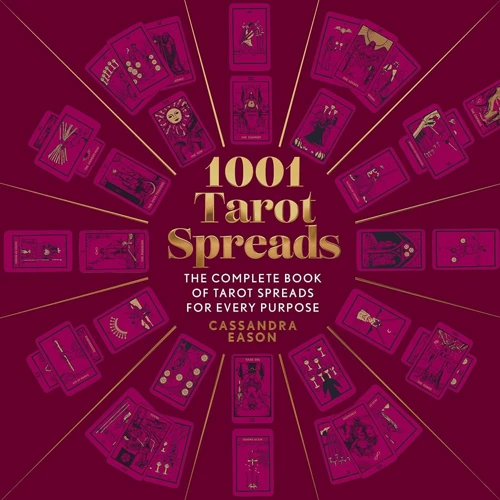
Celtic Cross Spread
The Celtic Cross Spread is one of the most widely used and popular tarot spreads. It is a comprehensive spread that provides deep insights into various aspects of an individual’s life. This spread consists of ten cards that are laid out in a specific pattern, representing different positions and their meanings. The first position represents the central issue or question at hand, while the second position reflects the immediate challenge or obstacle. The third position signifies the subconscious influences, while the fourth position represents the past events that have influenced the situation. The fifth position sheds light on the current influences and the sixth position represents the near future. The seventh position relates to the individual’s attitude or approach towards the situation, while the eighth position explores external influences that might affect the outcome. The ninth position offers insights into the individual’s hopes and fears, and the tenth position indicates the potential outcome or resolution. The Celtic Cross Spread is highly versatile and can be used for a wide range of questions and situations. Its intricate layout and detailed interpretations make it a favorite among tarot enthusiasts seeking in-depth guidance and clarity.
Three-Card Spread
The Three-Card Spread is one of the most popular and versatile tarot spreads used in divination. This simple yet powerful spread provides quick insights and guidance on a specific question or situation. The interpretation of each card in this spread is based on its position and the meaning assigned to it.
Card 1: Past – The first card represents the past and provides insight into the influences and events that have led to the current situation. It helps in understanding the background and context of the question being asked.
Card 2: Present – The second card represents the present and sheds light on the current circumstances and energies surrounding the question. It helps in understanding the current state of affairs and any challenges or opportunities that may arise.
Card 3: Future – The third card represents the future and offers guidance on the potential outcome or direction of the situation. It provides insights into the possibilities and potential developments that may occur based on the current trajectory.
The Three-Card Spread allows for a focused and concise reading, making it suitable for beginners and those seeking quick answers. It offers a snapshot of the past, present, and future, providing a holistic view of the situation at hand. However, it is important to note that interpretations may vary depending on the reader’s intuition and the specific deck being used.
Whether used for personal reflection, decision-making, or gaining clarity on a specific issue, the Three-Card Spread is a valuable tool in tarot divination. Its simplicity and versatility make it a go-to choice for many tarot enthusiasts seeking concise yet meaningful insights into their lives.
Relationship Spreads
Relationship spreads in tarot readings focus specifically on matters of the heart, providing insights and guidance for romantic relationships, friendships, or even family dynamics. These spreads are designed to address questions and concerns about love, compatibility, communication, and the overall dynamics between individuals. One popular relationship spread is the “Celtic Cross Love Spread” which offers a comprehensive analysis of a romantic relationship. It provides insight into the current state of the relationship, the desires and expectations of both partners, any challenges or obstacles present, and potential outcomes or resolutions. Another common relationship spread is the “Three-Card Relationship Spread” which offers a concise but meaningful assessment of the past, present, and future dynamics between two people. This spread can be helpful in gaining clarity and understanding about the overall direction of the relationship. Relationship spreads in tarot readings help individuals gain deeper insights into their connections with others and provide valuable guidance for navigating the complexities of interpersonal relationships.
Common Misconceptions and Skepticism
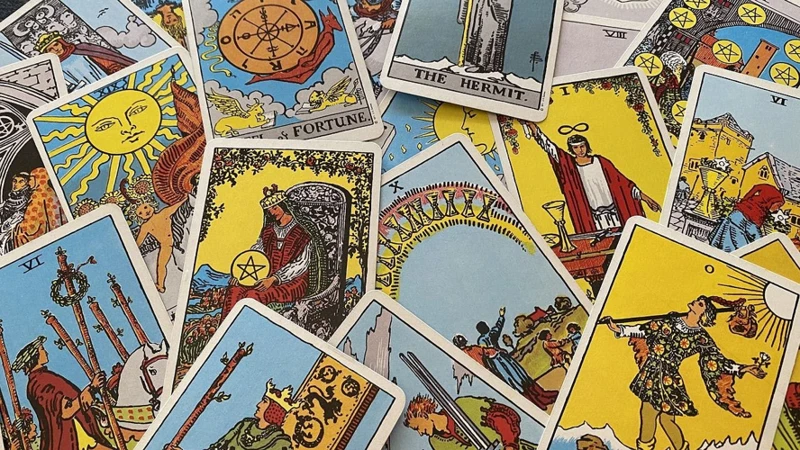
Despite its popularity and the widespread acceptance of tarot readings, there are still common misconceptions and skepticism surrounding the practice. It is important to address these misconceptions to gain a better understanding of tarot and its role in divination. 1. Fortune-telling: One of the most common misconceptions about tarot is that it is used to predict the future with absolute certainty. In reality, tarot readings provide guidance, insights, and possibilities, but they do not provide definitive predictions. 2. Occult and dark powers: Another common misconception is that tarot is associated with occult or dark forces. However, tarot is simply a tool, and its interpretations rely on the intuition and skill of the reader. 3. Superstitious beliefs: Some people view tarot readings as superstitious or irrational. However, tarot is a psychological and symbolic system that can be used for self-reflection and personal growth. 4. Lack of scientific evidence: Skeptics often dismiss tarot readings as lacking scientific evidence. While tarot may not fit into the traditional scientific framework, there are psychological and intuitive elements that can be explored. It is important to approach tarot with an open mind and recognize its value as a tool for self-exploration and introspection.
The Influence of Tarot in Popular Culture
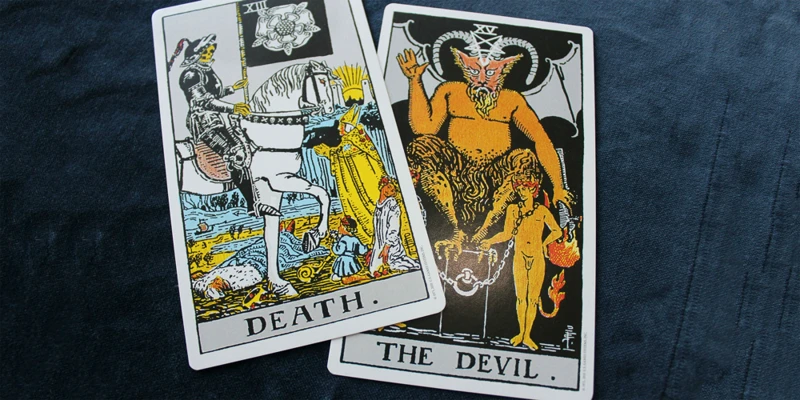
Art and Literature
Art and literature have been greatly influenced by tarot throughout history. Tarot cards have often been featured as artistic motifs in various art forms, including paintings, illustrations, and sculptures. Artists have been captivated by the symbolism and intricate designs of tarot cards, using them as inspiration for their own creative works. Tarot decks such as the Rider-Waite Tarot have become iconic in the realm of art, with their vivid imagery and distinct symbolism. In literature, tarot has been depicted in numerous works, adding an element of mysticism and intrigue to the narratives. Notable authors such as Italo Calvino and Alejandro Jodorowsky have explored the themes of tarot in their writings, showcasing its impact on storytelling. Tarot-inspired artwork and literary references continue to be celebrated and sought after by enthusiasts and collectors alike, cementing the enduring influence of tarot in the realms of art and literature.
Films and Television
Integrating Tarot with Other Divination Practices
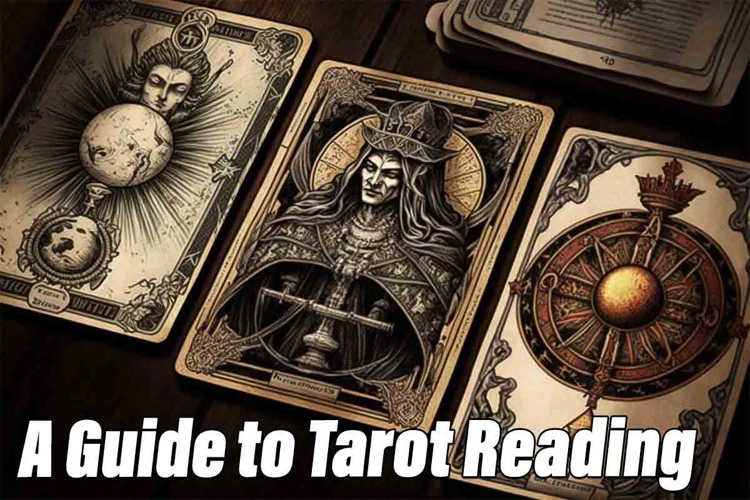
Integrating tarot with other divination practices can enhance the depth and accuracy of readings, allowing for a more comprehensive exploration of the spiritual realm. One popular practice that often complements tarot readings is astrology. Astrology and tarot share a common belief in the interconnectedness of cosmic forces and their influence on human lives. By incorporating astrological knowledge into tarot readings, readers can provide deeper insights into the querent’s personality traits, life patterns, and potential future outcomes. Another divination practice that can be combined with tarot is numerology. Numerology assigns mystical meanings to numbers, and when applied in conjunction with tarot cards, it can offer additional layers of symbolism and interpretation. Runes, an ancient Germanic alphabet, can also be used alongside tarot to provide answers and insights. Runes, with their own set of divine meanings, add a unique depth to the reading experience. Lastly, combining tarot with pendulum divination allows for more specific yes or no answers, providing clarity to complex situations. Tarot’s versatility and compatibility make it an excellent complement to various divination practices, enabling seekers to gain a more holistic understanding of their lives and the spiritual energies that surround them.
The Future of Tarot
As we look to the future, it is clear that tarot will continue to play a significant role in divination practices. The increasing popularity of tarot readings and the accessibility of tarot apps and online platforms are evidence of its enduring relevance. Here are some key aspects shaping the future of tarot:
- Integration of Technology: With the advancement of technology, tarot readings are becoming more accessible to a wider audience. Mobile applications and online platforms offer convenient ways to receive tarot readings and interpretations on the go. This integration of technology will likely continue to evolve, providing new opportunities and innovative approaches to tarot divination.
- Further Research and Exploration: The field of tarot continues to evolve as researchers and practitioners delve deeper into its origins, symbolism, and psychological implications. This ongoing research and exploration will contribute to a deeper understanding and appreciation of tarot, enhancing its credibility and expanding its applications.
- Personalization and Tailored Experiences: As people seek more personalized experiences, tarot readings will become tailored to individual needs and preferences. Tarot practitioners may develop specialized spreads or interpretations to address specific areas of concern or provide guidance in specific contexts, such as relationships, career, or personal growth.
- Integration with Other Modalities: Tarot will likely continue to be integrated with other divination practices and modalities, such as astrology, numerology, and energy healing. This integration can provide a holistic approach to divination, offering a broader perspective and deeper insights for seekers.
- Evolution of Tarot Design and Symbolism: Just as tarot designs and symbols have evolved throughout history, we can expect further evolution in the future. Tarot decks may incorporate new art styles, cultural influences, and even technological elements, reflecting the changing times and the diverse needs of tarot enthusiasts.
The future of tarot is both exciting and promising. As it continues to adapt and evolve, tarot will remain a powerful tool for self-reflection, insight, and spiritual growth.
Conclusion
In conclusion, the impact of tarot on modern divination practices cannot be understated. From its ancient origins to its evolution and spread across various cultures, tarot has become a powerful tool for guidance and self-reflection. The popularity of tarot readings today is a testament to its enduring relevance and appeal. Whether interpreted through the lens of psychology or quantum mechanics, tarot provides individuals with a means to connect with their intuition and gain insights into their personal journey. Ethical considerations and responsible practices within the realm of tarot readings ensure that this powerful tool is used responsibly and respectfully. Despite the skepticism and misconceptions surrounding tarot, it has managed to carve a place for itself in popular culture, influencing art, literature, films, and television. The future of tarot holds even more possibilities, as it continues to integrate with other divination practices and adapt to the changing times. Tarot remains a fascinating subject of study, offering valuable insights into the human experience and the mysteries of the universe.
